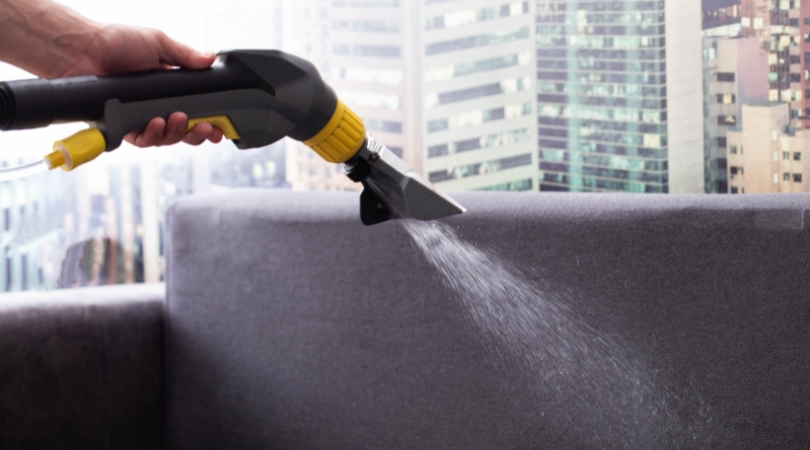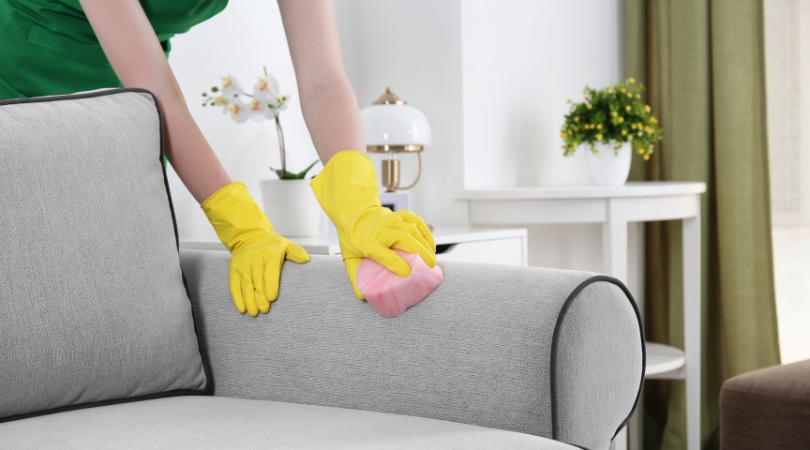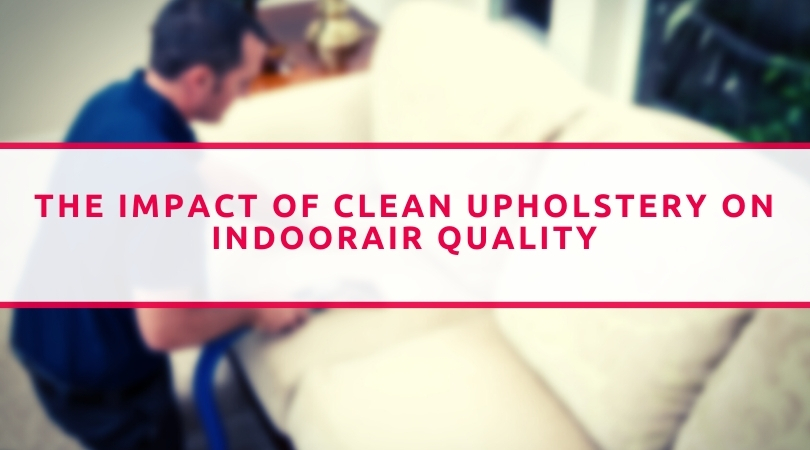
Benefits of Regular Carpet Cleaning for Improved Indoor Air Quality
November 15, 2023
The Importance of Professional Office Cleaning for Workplace Productivity
January 30, 2024Maintaining a healthy living environment is a concern for many homeowners. Various ways exist to improve indoor air quality, from proper ventilation to controlling dust and allergens. One often overlooked aspect of this is the cleanliness of your upholstery. In this comprehensive guide, we’ll delve deeper into the significant impact of clean upholstery on indoor air quality and provide valuable insights into how to keep your home’s air fresher and healthier.
Understanding Indoor Air Quality

Before delving into the relationship between upholstery and indoor air quality, let’s clarify what indoor air quality means. Indoor air quality is the air’s condition inside and around the buildings, especially because it affects not only the comfort but also the health of the occupants.
Indoor air quality is a critical aspect of overall health, as people spend a significant portion of their time indoors at home or work. Poor IAQ can lead to various health issues, including respiratory problems, allergies, and discomfort.
The Role of Upholstery in IAQ
Upholstered furniture is a common feature in most households. Sofas, chairs, and cushions add comfort and style to our living spaces but can also harbour dust, allergens, and pollutants. Over time, these particles can accumulate in the upholstery, leading to a decline in indoor air quality.
Dust and Allergen Accumulation
Dust mites, pet dander, and pollen are common indoor allergens that can settle into upholstery fibres. When disturbed, these particles can become airborne, leading to respiratory issues and allergies. This is especially concerning for individuals with asthma or other respiratory conditions.
Regular upholstery cleaning can help remove these irritants, improving the air you breathe. Vacuuming with a HEPA filter-equipped vacuum cleaner is a practical and effective way to reduce dust and allergen buildup on your furniture. Be thorough, paying attention to seams, folds, and crevices where these particles often hide.
Mold and Mildew Prevention
Upholstery can also become a breeding ground for mould and mildew, especially in humid environments. Mould spores released into the air can trigger allergies and other health problems. Cleaning and maintaining upholstery prevent these issues, ensuring a mould-free living space.
To prevent mould and mildew growth, it’s essential to control humidity levels in your home. Using a dehumidifier in areas prone to moisture buildup, such as basements, can be beneficial. Additionally, ensure that your upholstery remains dry and well-ventilated to discourage mould growth.
Odour Control
Upholstery fabrics can absorb unpleasant odours. Whether it’s food odours, pet smells, or other sources of malodorous scents, a clean upholstery surface can significantly reduce these odours, contributing to a fresher indoor atmosphere.
To address odours effectively, it’s essential to use appropriate cleaning solutions and techniques that target the specific source of the smell. Professional upholstery cleaning services may sometimes be necessary to eliminate stubborn odours.
Prolonging the Life of Upholstery
Aside from its direct impact on air quality, keeping your upholstery clean can extend its lifespan. This means you won’t need to replace furniture as frequently, reducing the environmental impact of furniture disposal and manufacturing.
Regular maintenance ensures a healthier living environment and saves you money in the long run. Fluffing and rotating cushions and avoiding direct sunlight and excessive moisture are all practices that can help preserve your upholstery’s appearance and functionality.
Upholstery Cleaning Methods
Now that we’ve established the importance of clean upholstery for indoor air quality, let’s explore some effective cleaning methods in greater detail.
Vacuuming
Regular vacuuming with a high-efficiency particulate air (HEPA) filter can help remove surface dust and allergens from your upholstery. Be sure to vacuum all crevices and seams to ensure a thorough clean. Consider using upholstery attachments for your vacuum cleaner to access tight spaces and corners.
Vacuuming should be a part of your routine cleaning schedule, especially if you have pets or family members with allergies. It’s a simple yet highly effective method for maintaining clean upholstery.
Professional Upholstery Cleaning

Consider hiring professional upholstery cleaning services for deeper and more effective cleaning. They have the expertise, equipment, and cleaning solutions to remove deep-seated dirt and allergens, leaving your furniture refreshed and your air quality improved.
Professional cleaning is recommended every 12 to 24 months, depending on usage and environmental factors. It’s an investment in the longevity of your upholstery and the well-being of your family.
Spot Cleaning
Address spills and stains promptly with appropriate spot-cleaning techniques. This prevents permanent damage to your upholstery and the accumulation of odour-causing substances.
When dealing with stains, it’s essential to identify the type of stain and use the appropriate cleaning solution. Always follow the manufacturer’s care instructions for your upholstery, as using the wrong cleaning products can lead to damage.
Regular Maintenance
Establish a routine maintenance schedule for your upholstery. This may involve vacuuming, spot cleaning, and occasionally fluffing and rotating cushions to prevent uneven wear.
Regular maintenance keeps your upholstery looking its best and contributes to a healthier indoor environment. Consistency is key to preventing the buildup of allergens and pollutants over time.
Clean upholstery isn’t just about aesthetics; it plays a crucial role in maintaining a healthy indoor environment. You can improve indoor air quality by addressing dust, allergens, mould, mildew, and odours. Regular cleaning and maintenance ensures that your upholstery contributes positively to the overall well-being of your home and its occupants.
In summary, consider the power of clean upholstery in enhancing indoor air quality. Take the necessary steps to keep your upholstery free from pollutants and allergens, and enjoy a healthier and more comfortable living space.
Reach out to us for unparalleled expertise in upholstery cleaning
If you’re eager to enjoy the advantages of upholstery cleaning for improved indoor air quality, contact our team of experts without delay. We’re dedicated to helping you cultivate a healthier, happier home. Call us now to schedule your professional upholstery cleaning service and embark on the journey to a cleaner, safer living environment. For more insights on maintaining a clean and healthy space, explore our latest article, “Benefits of Regular Carpet Cleaning for Improved Indoor Air Quality.”


